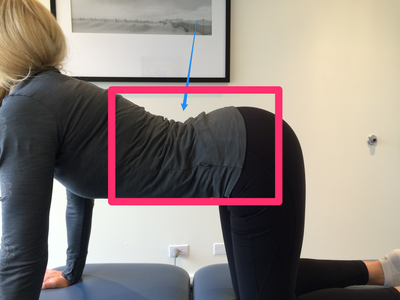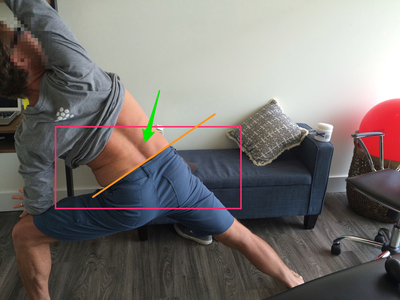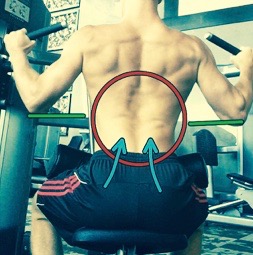The Movement Corner deconstructs the human movement experience
Stop focusing on impairments and start analyzing movement patterns!
Picture Analysis
Picture analysis shows a variety of movement problems that cause pain and dysfunction. We discuss misalignments that occur throughout the entire body. Most importantly, we emphasize a whole system approach to movement dysfunction.
Our Inspiration
The Movement Corner authors do not believe in one philosophy of movement. Our knowledge and education has come from the works of:
Shirley Sahrmann
Gray Cook
Lorimer Mosely
Robin McKenzie
OCS/FAAOMPT Physical Therapists
Shirley Sahrmann
Gray Cook
Lorimer Mosely
Robin McKenzie
OCS/FAAOMPT Physical Therapists
Purchase The Anatomy of Human Movement!
Is The Movement Corner right for you?
The Movement Corner is ideal for anyone who is passionate about movement!
While we delve deep into complex movement problems, many of the explanations are appropriate for people of all backgrounds.
While we delve deep into complex movement problems, many of the explanations are appropriate for people of all backgrounds.
Athletic Trainers |
Physical Therapists |
Chiropractors |
Personal Trainers |
Video Analysis
|
|
One kinetic chain
Movement in one body region directly effects other parts of the body. In the video to the left, the client recently strained his hamstring muscle while skiing. As he attempts to lift his leg, the low back over extends to assist with the movement. This subtle shift in the low back is a clear demonstration of poor gluteal muscle timing and activation. Each video analysis discusses the movement dysfunction, common misalignments, typical compensatory strategies, and evidenced based treatment strategies. In addition to video feed, associated text follows each video analysis to provide a deeper understanding of the dysfunctional movements. |
|
|
Movement: Military press
Dysfunction Noted: Lacking shoulder mobility Common reason(s) for Poor Movement: The shoulder joint is inherently unstable. When discussing this joint with my patients, I will often use the 'golf ball on a tee' analogy to indicate why it needs stability. Because of this inherent instability, muscles, ligaments, and other connective tissue play a large role in stabilizing the shoulder. In the video above, the individual lacks shoulder motion. As he raises his arms overhead, he is unable to keep his spine locked against the wall. This same pattern occurred everytime he lifts his arm overhead. The middle back would continuously overarch to complete the movement. Other mobility restrictions can be seen by his inability to keep the arm in a neutral range of motion. In this instance, his arm maintain contact against the wall. . |
Solution/ Corrective Strategies:
Since the middle back was continuously compensating to reach overhead, he was not using his scapular stabilizing muscles to assist with shoulder movements. Retraining included basic scapular strengthening- including middle and lower trapezius strengthening as well as serratus anterior activation. Most importantly, we worked on the same movement pattern seen above. We focused on keeping his spine against the wall while reaching overhead. When his spine lost contact or he experienced any shoulder symptoms, he would return to neutral.
*Other people may require more specific dynamic stretching or soft tissue work to regain full movement. Additionally, thoracic extension is important for full shoulder motion; however, individuals need the ability to disassociate or isolate the glenohumeral joint from the thoracic spine. This individual had thoracic mobility, but lacked disassociation
Since the middle back was continuously compensating to reach overhead, he was not using his scapular stabilizing muscles to assist with shoulder movements. Retraining included basic scapular strengthening- including middle and lower trapezius strengthening as well as serratus anterior activation. Most importantly, we worked on the same movement pattern seen above. We focused on keeping his spine against the wall while reaching overhead. When his spine lost contact or he experienced any shoulder symptoms, he would return to neutral.
*Other people may require more specific dynamic stretching or soft tissue work to regain full movement. Additionally, thoracic extension is important for full shoulder motion; however, individuals need the ability to disassociate or isolate the glenohumeral joint from the thoracic spine. This individual had thoracic mobility, but lacked disassociation
Movement is complex! Our ability to move efficiently is directly related to our neurology, physiology, musculoskeletal system, and more. The muscles are deeply innervated by nerves and constantly communicate with our brain to complete difficult tasks. In the presence of injury, the entire movement experience is altered.
Why the Movement Corner?
The mission of the Movement Corner is to facilitate the growth, develop, and understanding of how the human body moves. Whether you train for sport, exercise, health, or purely for joy, the Movement Corner will teach you to move better, more efficiently, and for longevity.
Terms of Use
LIMITATION ON Heafner Health PLLC LIABILITY
Heafner Health PLLC’s liability, whether in contract, tort, negligence, or otherwise, shall be limited in the aggregate to direct and actual damages not to exceed the fees received by Heafner Health PLLC from Subscriber. “Subscriber” refers to anyone that provides their email to sign up for content or services on http://www.optimfellowship.com/the-movement-corner.html. Heafner Health PLLC will not be liable for consequential, incidental, punitive, special, exemplary, or indirect damages resulting directly or indirectly from the use of or reliance upon any material provided by Heafner Health PLLC. Without limitation, Heafner Health PLLC shall not be responsible or liable for any loss or damages related to, either directly or indirectly, (1) any decline in market value or loss of any investment; (2) a subscriber’s inability to use or any delay in accessing the Heafner Health PLLC website or any other source of material provided by Heafner Health PLLC; (3) any absence of material on the Heafner Health PLLC website; (4) Heafner Health PLLC’s failure to deliver or delay in delivering any material or (5) any kind of error in transmission of material; or (6) the use by a subscriber of any research to invest in any way which may be deemed unsuitable in accordance with certain industry standards. Heafner Health PLLC and Subscriber acknowledge that, without limitation, the above-enumerated conditions cannot be the probable cause of any breach of any agreement between Heafner Health PLLC and Subscriber. “No-risk” and “risk-free” refer solely to the subscription price refund policy.
This website, text, images, videos, and other materials on The Movement Corner webpages, The Movement Corner Facebook Group, and The Movement Corner newsletter have been provided as general information for exercise and rehabilitation and are intended for educational purposes. Any individual beginning mentioned, or beginning any other exercise program, should first consult with a qualified health professional. Discontinue any exercise that causes discomfort and/or dysfunction and consult with a qualified medical professional. Consult with a physician prior to starting any rehabilitation or exercise program. This website does not contain medical advice. The instructions and advice presented are not a substitute for professional testing, instruction, or training. The creators, producers, and distributors of The Movement Corner, Heafner Health PLLC, and OPTIM website disclaim any liabilities or loss, personal or otherwise, in connection with the exercises and advice herein.
Heafner Health PLLC’s liability, whether in contract, tort, negligence, or otherwise, shall be limited in the aggregate to direct and actual damages not to exceed the fees received by Heafner Health PLLC from Subscriber. “Subscriber” refers to anyone that provides their email to sign up for content or services on http://www.optimfellowship.com/the-movement-corner.html. Heafner Health PLLC will not be liable for consequential, incidental, punitive, special, exemplary, or indirect damages resulting directly or indirectly from the use of or reliance upon any material provided by Heafner Health PLLC. Without limitation, Heafner Health PLLC shall not be responsible or liable for any loss or damages related to, either directly or indirectly, (1) any decline in market value or loss of any investment; (2) a subscriber’s inability to use or any delay in accessing the Heafner Health PLLC website or any other source of material provided by Heafner Health PLLC; (3) any absence of material on the Heafner Health PLLC website; (4) Heafner Health PLLC’s failure to deliver or delay in delivering any material or (5) any kind of error in transmission of material; or (6) the use by a subscriber of any research to invest in any way which may be deemed unsuitable in accordance with certain industry standards. Heafner Health PLLC and Subscriber acknowledge that, without limitation, the above-enumerated conditions cannot be the probable cause of any breach of any agreement between Heafner Health PLLC and Subscriber. “No-risk” and “risk-free” refer solely to the subscription price refund policy.
This website, text, images, videos, and other materials on The Movement Corner webpages, The Movement Corner Facebook Group, and The Movement Corner newsletter have been provided as general information for exercise and rehabilitation and are intended for educational purposes. Any individual beginning mentioned, or beginning any other exercise program, should first consult with a qualified health professional. Discontinue any exercise that causes discomfort and/or dysfunction and consult with a qualified medical professional. Consult with a physician prior to starting any rehabilitation or exercise program. This website does not contain medical advice. The instructions and advice presented are not a substitute for professional testing, instruction, or training. The creators, producers, and distributors of The Movement Corner, Heafner Health PLLC, and OPTIM website disclaim any liabilities or loss, personal or otherwise, in connection with the exercises and advice herein.





